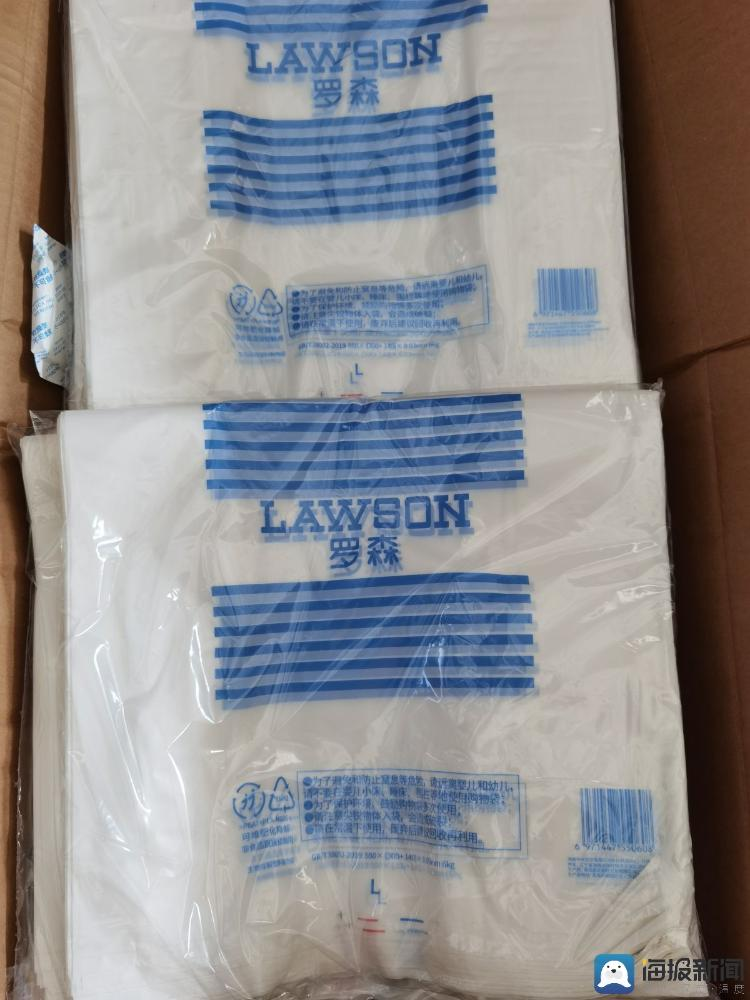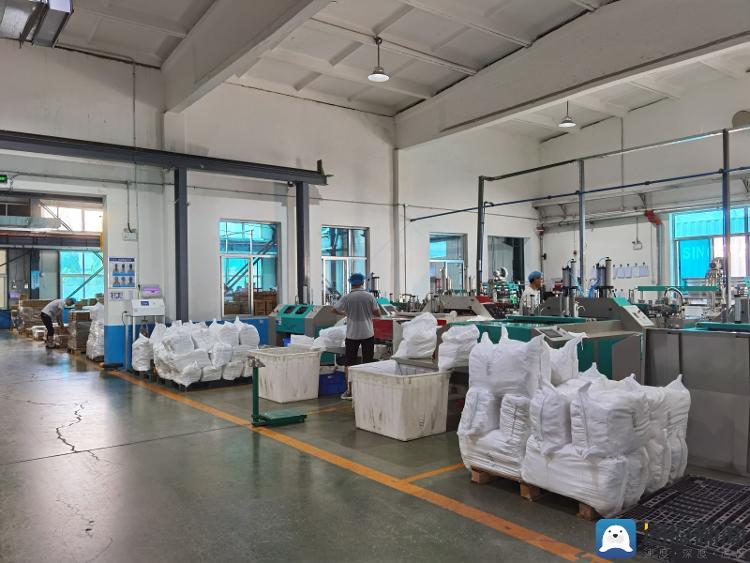The plastic problem has been a global environmental problem second only to climate change. In recent years, the food delivery industry has developed in a blowout manner. While providing convenience to citizens, the resulting food delivery garbage also has a non-negligible impact on the environment. A few days ago, "Survey of Takeaway Plastic Waste" series reports of Dazhong.com focused on Dawn's biodegradable materials and green and environmentally friendly plastic packaging products, and the construction of Dawn's degradable materials industrial chain, highlighting the company's green, low-carbon and high-end new material manufacturing level.
According to the "Research Report on the Environmental Impact and Recycling of Packaging Plastics in the Food Delivery Industry (2021)", China's food delivery industry has experienced explosive growth since 2015, resulting in a significant increase in the consumption (and waste) of plastic packaging. The amount of plastic packaging waste has risen from 57,000 tons in 2015 to 574,000 tons in 2020. This has placed substantial pressure on the ecological environment, and its implications should not be underestimated.
The essence of plastic pollution is that plastic waste leaks into natural environments such as soil and water bodies and is difficult to degrade, causing environmental hazards such as soil damage and microplastics.
Can plastic pollution be solved from the production end? What is the principle of plastic degradation? How is it achieved that only water and carbon dioxide are produced after plastic degradation? Recently, reporters from Poster News conducted interviews at Shandong Dawn Zhoushi Packaging Co., Ltd. and Shandong Dawn Degradable Materials Co., Ltd., both under Dawn Group, revealing the secrets behind solving plastic pollution from the production end.
It can completely decompose into water and carbon dioxide within 180 days of a composting environment.
"This product is not much different from PE products in appearance, but it has very strong tensile properties and can bear 6 kilograms." On July 28th, at Shandong Dawn Zhoushi Packaging Co., Ltd. (referred to as 'Dawn Zhoushi'), Vice General Manager Yang Houcong introduced the Lawson convenience shopping bag produced by it to the reporters of Dazhong.com. He stretched the handle of the shopping bag by about 5 centimeters, but it did not break.

Biodegradable plastic bags produced by Dawn Zhoushi
Yang Houcong explained that it was a biodegradable plastic bag that can completely decompose into water and carbon dioxide within 180 days in a composting environment. There are no non-degradable components or other toxic substances in the process.
The term "composting environment" primarily refers to conditions of high temperature and high humidity. Biodegradable plastic bags can undergo decomposition in the presence of naturally occurring microorganisms such as bacteria, molds (fungi), and algae. Ideally, biodegradable plastics possess excellent performance during use and can be fully broken down by environmental microorganisms after being discarded, becoming a part of the carbon cycle in nature.
As part of the downstream segment of Dawn Group's biodegradable materials industry chain, in Dawn Zhoushi packaging sector, apart from biodegradable shopping bags for brands like Walmart and Lawson, there are also biodegradable materials used for carry bags by well-known milk tea brands.
Yang Houcong explained that the main components of the biodegradable plastic bags produced by the company were PLA, PBAT, and starch. In addition to the advantage of breaking down into water and carbon dioxide without burdening the environment, these bags also possess characteristics such as safety and renewability.
In terms of safety, in regions where composting capacity is lacking, when subjected to incineration, these bags will not generate toxic substances such as dioxins. Regarding renewability, the components PLA and starch are derived from corn starch, making them sustainable.

Dawn Zhoushi production workshop
Yang Houcong explained that the current degradable plastics can be classified into two main types: biodegradable and photo-oxidative degradable. Photo-oxidative degradable products primarily use PE material and added degradable masterbatch or filler. Due to their plastic content, there is some controversy over their degradation performance. Many countries and regions have excluded photo-oxidative degradable products from the scope of degradation. China's national standard GB/T38082-2019 for biodegradable plastic shopping bags also excludes such products.

Fully biodegradable shopping bags produced by Dawn
However, comparatively, degradable plastics are more expensive than PE-based products. Yang Houcong used supermarket shopping bags as an example, stating that for bags of the same size, biodegradable plastic bags are about 1/3 more expensive than PE plastic bags. This price difference can pose certain challenges during the promotion process. "But with intense market competition and technological development, the prices of these two types of products are gradually approaching. In the previous market, biodegradable products were priced at more than double that of PE products."
The prices of biodegradable plastic products are now very close to those of traditional plastics.
The upstream of biodegradable plastic production companies is PBAT manufacturing enterprises. Shandong Dawn Degradable Materials Co., Ltd. (referred to as "Dawn Degradable"), a subsidiary of Dawn Group, is responsible for producing PBAT. Its products are mainly sold domestically and also exported to countries such as Australia, Italy, and Germany.

PBAT products and their modified materials
In the exhibition hall of Dawn Degradable, the reporters from Dazhong.com saw displays of biodegradable products made from PBAT, including disposable lunch boxes, plates, spoons, straws, and shopping bags. General Manager Li Zonghua explained that downstream companies modify PBAT according to the specific performance requirements of different products. For instance, the texture of a bubble tea carry bag might need to be softer and smoother, while agricultural films may need to focus on resistance to light exposure and ultraviolet rays.

Dawn fully degradable tableware produced by downstream enterprises
Li Zonghua explained that if biodegradable plastics are not in composting conditions, whether in sewage or in fields, as long as they are in warm environments with bacteria present, they can completely degrade into carbon dioxide and water. Of course, depending on the specific conditions, the degradation time may vary, but it will take a maximum of two years to completely degrade, without causing secondary pollution. This also means that when consumers dispose of products such as biodegradable plastic takeaway boxes, they can throw them in the trash with kitchen waste.
Li Zonghua also mentioned that five years ago, biodegradable plastic products were much more expensive than traditional PE products. However, starting from last year, domestic production capacity has increased, leading to a greater market supply and intense competition. As a result, the prices of biodegradable plastic products have been comparable to those of traditional plastics.
For enterprises that produce ordinary plastics like PE and PVC products, switching to producing biodegradable plastics only requires changing the raw materials and processes, without the need to replace equipment or significantly increase investments," Li Zonghua said .
Li Zonghua further explained that the raw materials for PBAT include adipic acid, terephthalic acid, and BDO. Now, Dawn Group plans to establish a BDO project in Xinjiang, aiming to create a complete biodegradable industry chain.
Li Zonghua said, "We are currently in a transition period between biodegradable plastics and conventional plastics. Many countries and international organizations have recognized the significant harm that single-use white pollution poses to human living and ecological environments. Promoting the use of fully biodegradable plastics is a major trend." He mentioned that to achieve the substitution of conventional plastics with biodegradable plastics in China, including shopping bags, courier bags, takeaway bags, agricultural films, disposable medical devices, etc., it would require a market capacity of approximately 5 to 10 million tons of PBAT. However, the current production capacity is around 3 million tons.
The journalist noticed that according to data from Tianyancha, there are more than 13,000 domestic companies related to biodegradable plastics. In terms of regional distribution, Yunnan, Jiangsu, and Guangdong have the highest number of relevant companies, with over 7,500, 700, and 600 companies respectively.